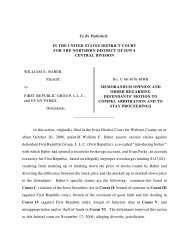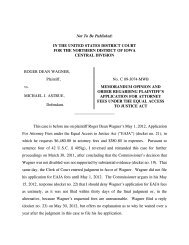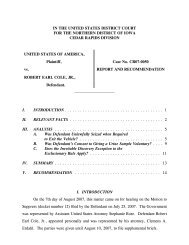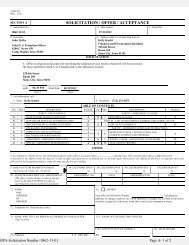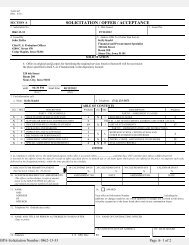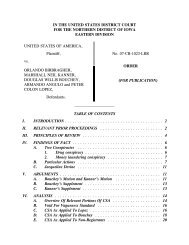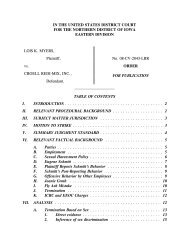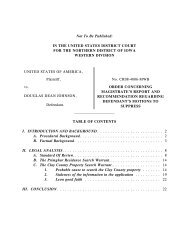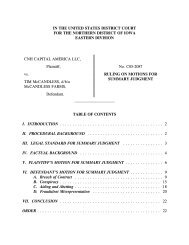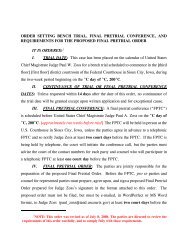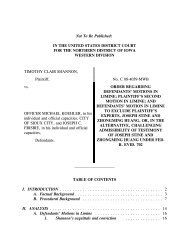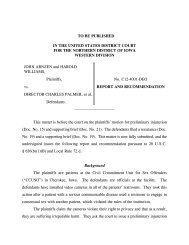Galm v. Eaton Corporation - Northern District of Iowa
Galm v. Eaton Corporation - Northern District of Iowa
Galm v. Eaton Corporation - Northern District of Iowa
You also want an ePaper? Increase the reach of your titles
YUMPU automatically turns print PDFs into web optimized ePapers that Google loves.
(8th Cir. 2006). Thus, when faced with a contention that less deferential review is<br />
appropriate, the court must decide whether the claimant has “<strong>of</strong>fer[ed] evidence that ‘gives<br />
rise to serious doubts as to whether the result reached was the product <strong>of</strong> an arbitrary<br />
decision or the plan administrator’s whim.’” Heaser, 247 F.3d at 833 (quoting Layes, 132<br />
F.3d at 1250). There are two steps in that process: The court must first decide whether<br />
the claimant has presented “‘material, probative evidence demonstrating that . . . a palpable<br />
conflict <strong>of</strong> interest or a serious procedural irregularity existed,” then determine whether that<br />
conflict or irregularity “‘caused a serious breach <strong>of</strong> the plan administrator’s fiduciary duty<br />
to her.’” Id. (quoting Woo, 144 F.3d at 1160); accord Parkman, 439 F.3d at 772 n.5<br />
If the claimant has persuaded the court that there is a conflict <strong>of</strong> interest or<br />
procedural irregularity that caused a breach <strong>of</strong> the administrator’s fiduciary duty, such that<br />
“less deferential” review is appropriate, the court must decide what “proportion” <strong>of</strong><br />
deference should be given the plan administrator’s determination in light <strong>of</strong> the conflict <strong>of</strong><br />
interest or procedural irregularities. See Woo, 144 F.3d at 1161-62. For example, in Woo,<br />
after finding a conflict and irregularities that “had a sufficient connection to the decision<br />
reached to trigger a less deferential review,” the court decided that the conflict and<br />
irregularities were so “egregious” that the court would “require that the record contain<br />
substantial evidence bordering on a preponderance to uphold [the administrator’s] decision”<br />
to deny benefits on factual grounds. Id. at 1162.<br />
b. Plaintiff’s grounds for “less deferential” review<br />
i. Conflict <strong>of</strong> interest. <strong>Galm</strong> argues that “less deferential” review is appropriate<br />
here, because <strong>Eaton</strong> had a conflict <strong>of</strong> interest as both insurer and plan administrator for the<br />
Plan. She argues that, as a pr<strong>of</strong>it-making company, <strong>Eaton</strong> had a financial interest in<br />
disallowing her claim for second-tier disability benefits under the Plan.<br />
The Eighth Circuit Court <strong>of</strong> Appeals has recognized that when the insurer is also the<br />
20



